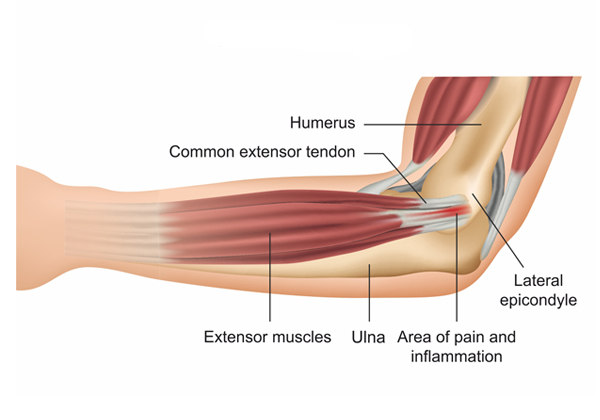Understanding Golfer’s Elbow: Causes, Symptoms, and Treatment Options
An Overview
Do you experience pain on the inside of your elbow, especially when gripping or bending your wrist? You might have Golfer’s elbow, also known as medial epicondylitis. This condition, similar to tennis elbow, affects the tendons on the inner side of your elbow.
What is Golfer’s Elbow?
Golfer’s elbow is a degenerative condition, not an inflammatory one. It occurs due to wear and tear over time, causing damage to the tendons that bend your wrist towards your palm. While the name suggests it’s exclusive to golfers, anyone performing repetitive gripping or wrist-bending activities can develop this condition.
Symptoms
- Pain and tenderness on the inside of your elbow, especially when gripping or bending your wrist.
- Pain that worsens with activities like squeezing objects, chopping wood, or carrying heavy objects.
- Weakness in your grip.
- Stiffness in the elbow, particularly in the morning.
Causes
- Repetitive motions: Activities like golfing, pitching in baseball, hammering, using power tools, or frequent use of hand tools can put excessive stress on the tendons, leading to tears.
- Improper technique: In sports, using incorrect technique can increase stress on the tendons.
- Weak forearm muscles: Weak muscles can make you more prone to overuse injuries.
Diagnosis
Your doctor will typically diagnose Golfer’s elbow based on your symptoms and a physical examination. They may also perform:
- Physical tests: Checking for pain with specific wrist movements.
- X-rays: To rule out other bone problems.
- MRI scan (in some cases): To get a detailed picture of the tendons and surrounding tissues.
Treatment
Most cases of Golfer’s elbow improve with non-surgical treatments, such as:
- Rest: Avoiding activities that aggravate the pain.
- Ice therapy: Applying ice packs to the affected area for 15-20 minutes at a time, several times a day.
- Pain medication: Over-the-counter pain relievers can help manage pain and inflammation.
- Physical therapy: Exercises to strengthen the forearm muscles and improve flexibility can prevent future injury.
- Bracing: Wearing a brace can support the forearm and reduce stress on the tendons.
If these methods don’t provide relief, your doctor might recommend
- Injections: Injections of a powerful anti-inflammatory medication to reduce pain and inflammation. PRP injections are also recommended (see Treatment section)
- Surgery: Surgery is rarely needed but may be considered in severe cases where other treatments fail.
Remember
Early diagnosis and treatment are crucial for a full recovery. If you experience persistent elbow pain, consult your doctor to discuss the best treatment options for you.

